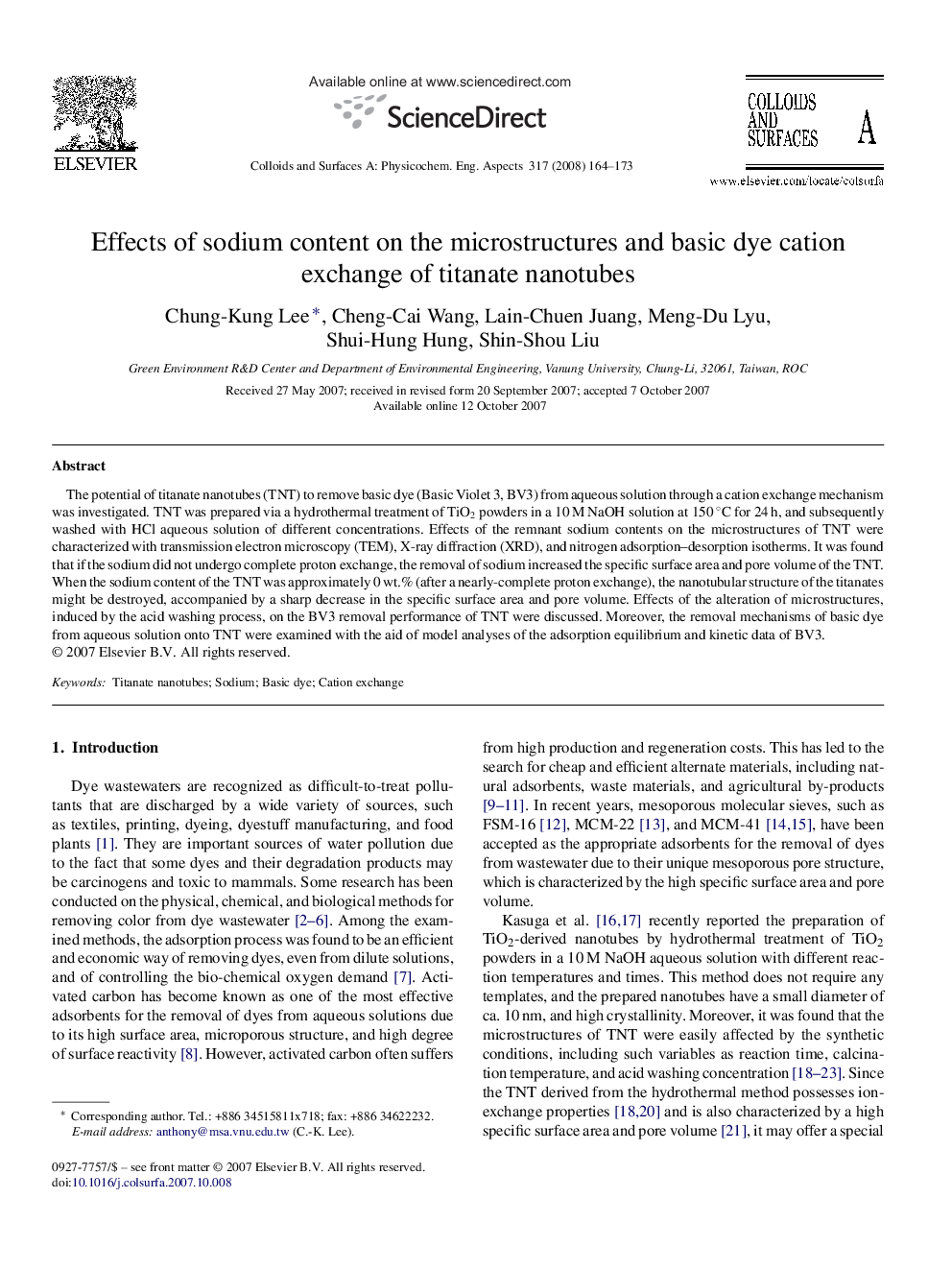| Article ID | Journal | Published Year | Pages | File Type |
|---|---|---|---|---|
| 596787 | Colloids and Surfaces A: Physicochemical and Engineering Aspects | 2008 | 10 Pages |
The potential of titanate nanotubes (TNT) to remove basic dye (Basic Violet 3, BV3) from aqueous solution through a cation exchange mechanism was investigated. TNT was prepared via a hydrothermal treatment of TiO2 powders in a 10 M NaOH solution at 150 °C for 24 h, and subsequently washed with HCl aqueous solution of different concentrations. Effects of the remnant sodium contents on the microstructures of TNT were characterized with transmission electron microscopy (TEM), X-ray diffraction (XRD), and nitrogen adsorption–desorption isotherms. It was found that if the sodium did not undergo complete proton exchange, the removal of sodium increased the specific surface area and pore volume of the TNT. When the sodium content of the TNT was approximately 0 wt.% (after a nearly-complete proton exchange), the nanotubular structure of the titanates might be destroyed, accompanied by a sharp decrease in the specific surface area and pore volume. Effects of the alteration of microstructures, induced by the acid washing process, on the BV3 removal performance of TNT were discussed. Moreover, the removal mechanisms of basic dye from aqueous solution onto TNT were examined with the aid of model analyses of the adsorption equilibrium and kinetic data of BV3.
